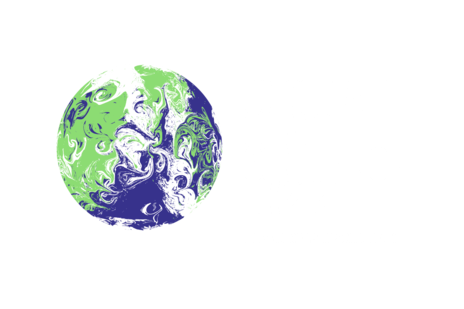Fashion’s Tech Revolution: NFTs, WEB3 & METAVERSE
May 10, 2022
Francesca Witzburg


How are NFTs, the Metaverse and Web3 Revolutionizing Fashion?
It seems as if every industry is buzzing about NFTs, the Metaverse and Web3—and fashion is no exception. Adidas partnered with popular NFT collection Bored Ape Yacht Club, Dolce & Gabbana participated in the first Metaverse Fashion Week in Decentraland, and Puma collaborated with ARTISANT to create virtual wedding fashion. These are only a few examples of how designers and brands are utilizing NFTs, the Metaverse and Web3. But what exactly are NFTs, the Metaverse and Web3, and how are they revolutionizing fashion?
Blockchain Technology
NFTs, the Metaverse and Web3 are emerging technologies that utilize the blockchain. The blockchain is an immutable public and decentralized ledger shared among various networks, which allows for verification of transactions without the need to rely on a centralized organization or third parties. It is revolutionary as it frictionlessly facilitates transactions, without the need to rely on subjective intermediaries who have the power to tamper with or falsify data. Blockchain revolutionizes verification of assets. To give a fashion example, brands and designers can record sales on the blockchain to distinguish authentic goods from counterfeit ones. With the developments of blockchain technology like NFTs making access more user friendly, blockchain will only become more integrated into our lives and businesses.
NFTs
What is an NFT?
Non-fungible tokens (“NFTs”) are digital assets traded and verified on the blockchain. In other words, NFTs are proof of ownership of an asset (often a digital asset) on the blockchain. In the future, many physical goods will be connected and verified through NFTs. Designers and brands can use NFTs to sell and verify ownership of assets. NFTs question us to think beyond a “physical world” definition of ownership. Without contractual language to the contrary, intellectual property rights are not transferred. This confuses many people—they wonder, what exactly are you getting if you don’t have the rights to the intellectual property? Without any other terms, an NFT is just a link to a digital file and a hash on the blockchain. The fine art world can give us a glimpse of understanding. When once typically purchases a piece of fine art, it is well understood that the sale does not include a transfer of copyright ownership in the underlying artwork. Similarly, an NFT purchase (without contractual language to the contrary) does not give the NFT holder a copyright in the underlying artwork. By owning the NFT, the holder gets access to a brand, community, and any other utility that the NFT creator can envision and grant in separate contractual language. Another revolutionary aspect of NFTs is that they can give royalties to the NFT creator without needing a centralized intermediary to collect and manage the royalties.
Digital Art
As of the date of this piece, many of the NFT projects out are digital art. Just as there is a demand for fine art in the real world, there is also a demand for digital art. NFTs give access to a collectible or offer the opportunity to invest in a brand, while such access or investment can be verified publicly on the blockchain. This is something that cannot be said of the current world of fine art or collectibles, where counterfeiting and forgery are rampant. In fact, some experts estimate much of the physical art or sports memorabilia in circulation is fraudulent. But NFTs allow for buyers to know for sure that their purchased art or collectible is an original, unique, one-of-a-kind piece because each transaction is recorded on the blockchain and cannot be altered.
Branding & Marketing
The fashion world has embraced NFTs as branding and marketing tools. One example is the adidas x Bored Ape collaboration as mentioned above. Another is Gucci’s 10KTF Gucci Grail that it launched to customize certain NFT profile pictures including World of Women. Through NFTs, fashion brand receive attention in this hot space. NFTs have also redefined strategic celebrity partnerships. A brand can pay hundreds of thousands for a celebrity to wear its clothing for one night of an award ceremony. But through NFTs, they could instead have a celebrity own its NFT which the celebrity would then show off as its profile picture, thus aligning the celebrity with its brand for longer than one night and with much more reach.
Virtual Fashion
NFTs are also redefining the way we think about clothing and apparel. Brands and designers are creating virtual fashion to be worn by consumers virtually and with their avatars. Just as we wear fashion as a form of expression and status, similarly, there is a demand to purchase fashion to cloth and style virtual personas. Morgan Stanley predicts the market for virtual fashion could be worth more than $55 billion by 2030. Virtual goods have been around for some time in the gaming context. In 2019, Louis Vuitton collaborated with League of Legends to offer LV-branded digital assets. But the Metaverse is expanding past gaming, as creators envision it to be a world where consumers and the public hang out, shop and show off fashion in the virtual world. A leader in the virtual fashion space is RTFKT, the Nike-acquired virtual fashion NFT studio. RTFKT offers virtual sneakers that sell for tens of thousands of dollars and has a 10,000 piece digital art collection called CloneX which as of the date of this article, has million dollar price tags for some individual pieces. DressX is another example a new business in the virtual fashion economy. DressX is a digital fashion goods marketplace that sells digital fashion as NFTs and also has an augmented reality app where users can try on digital fashion items on their physical bodies using augmented reality, similar to “filters.” Designers can sell their fashion goods on DressX, and users can purchase the digital fashion designs to wear them in the Metaverse or to have the design superimposed onto their bodies in photos that can then be used on social media.
Community
NFTs allow the holder to invest in and get access to the NFT creator’s community. An NFT creator can build a strong community and also give perks beyond just the ownership of the NFT. For example, the NFT creator can have terms that give the NFT holder access to conferences, meetups, physical merchandise, and much more. The limit is only in the mind of the NFT creator. In sum, NFTs are a great opportunity for brands, designers, and people with communities.
The Metaverse
The Metaverse is a mix of multiple technologies, including augmented reality, virtual reality and video where users hang out in a digital universe. It’s a virtual world where users can work, play and connect with strangers, friends, colleagues and clients. There are different virtual reality spaces that companies are building, such as Decentraland and The Sandbox. Meta and Microsoft are currently building theirs as well. One day they may all link together to actually form “the Metaverse”— an immersive virtual world that is parallel to our reality and connects all the metaverses. Currently, there are concerts, malls, hang out spots happening in these metaverse spaces. Virtual real estate is also for sale in these metaverses where brands can build locations for users to hang out, purchase virtual goods and services, and advertise.
With the industry’s first Metaverse fashion show, brands like Estee Lauder and Dolce & Gabbana showed off their products and designs in the Metaverse. Designers and brands can use the virtual world to design collections, host fashion shows, and meet with buyers, all at a fraction of the financial and environmental cost.
Web3
Web 1 refers to the first stage of the Internet, with static web pages. Web 2 refers to websites that highlight user generated content and social media. Web 2 also marks the era of centralization, where most of the communications and transactions take place on platforms owned and controlled by big companies like Google, Meta, and Amazon.In simple terms, Web3 is the next phase of the internet. Web 3 intends to break free of centralized and monopolistic control. The concept behind Web3 is a decentralized ecosystem based on blockchain that would verify transactions, thus eliminating the need for a centralized intermediary. Web3 will allow fashion designers and brands to tap into blockchain technology whether its to build new communities, sell NFTS, or innovate and create new apps and technologies themselves.
Conclusion
NFTs, the Metaverse, and Web3 are not just buzzwords – they are revolutionary technologies and concepts that are already changing the way consumers shop and purchase, and how brands and designers market and sell to those consumers. The fashion industry has evolved significantly over the past two decades, and with the inception of these newer technologies, it will continue to evolve, offering designers and brands the opportunity to tap into newer, more efficient and ecofriendly markets.©2022, Francesca Witzburg, Esq.
Previous

FASHION-ABLE EDUCATION
